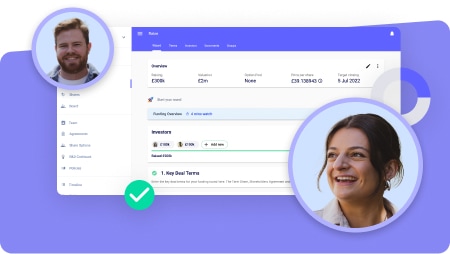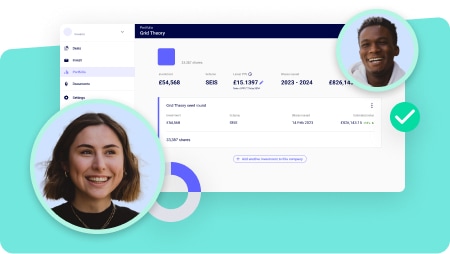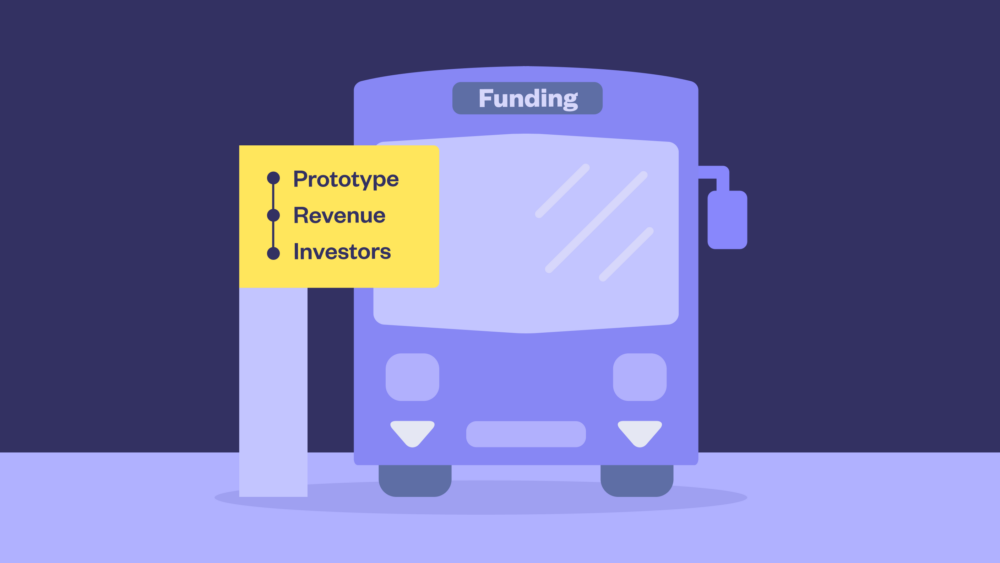Video transcript
Anthony Rose: All right, I want to talk about the founder or startup funding journey.
So I get lots of people at SeedLegals asking, you know, “Great, I want to give up my day job. How should I fundraise? Who do I raise from? How much do I need to raise?”
So in the next few minutes, let’s see if we can nail that fundraising journey. Of course, they’re all different, but most of them fall in a standard pattern.
So the first thing is, before you give up your day job, make sure that you validate that what you’re building is something that people really want. Because too often founders start by wanting to build things. They think the hard thing is building it. But the hard thing is really having people want it. And you wake up in a cold sweat a year or two later, having raised money, having got people to join you, realising that nobody wants it.
So you want to really go out and find out if people really want to use it. And to do that, you might make a mock up, a prototype. And you might spend a few thousand pounds of your own money on that so you’re testing something that reasonably represents your product. Obviously, if it’s a mobile app, it’s easy to do. If it’s a drone, it’s harder. But to the extent you can test it, that’s great.
So the next thing is, you’re probably going to do a friends and family funding round. What does that mean? Well, that means that you’re gonna go out to people that you know, roughly, and you might raise £50 or £70,000 giving investors their SEIS or EIS.
But before you even do that, you might be thinking, “should I raise funding in the first place? Maybe I can borrow money from the bank. Maybe I can get money from the government.” So quickly, let’s go through that.
So when you go to borrow money from the bank, the problem is the bank will only lend you money if you already have a revenue stream. And of course, you mustn’t borrow money if you have no revenue. Otherwise you go bankrupt, you can’t pay it back.
So if you’re a cheese shop and you’re buying cheese and selling cheese, you can go to the bank and they’ll lend you money to buy more cheese.
But if you’re a start up and you go to the bank and they go, “Great, have you got customers?” You go, “No.” “Have you got revenue?” You go, “No.” “Are you losing money?” “Yes.” Then they’re never gonna lend you money.
So for most startups borrowing money from the bank is a nonstarter.
The next one is Innovate UK and grant funding, which is great in theory. The government will just give me money.
Some of it is match funding. So they give you money, but you still have to raise. And some of it is just grants.
Now, if you’re at a university, deep tech or genetics spin out, you can probably have a reasonably high chance of getting funding in this way.
But for your average start up, you’re gonna be going for a smart grant. And there the batting average, the success rate is like two or 3%. So the sad reality is, of course, if you want to and you’ve got time, apply for a grant. But if your company, if you want to run this like a military operation, have an idea, execute it, then putting everything on hold for six months with a few percent chance of getting a grant isn’t really something you want to bet the farm on.
Which means most companies, most start ups, go back to fundraising and equity investment.
OK, so step one was put some money in yourself to get prototypes. Step two is a bootstrap round. Step three, of course you don’t have to do all of these steps, is to do your typical UK angel round, raising maybe £200 or £250,000 from angel investors getting their SEIS tax benefits. And you’re usually gonna raise this money to get to launch.
Once you’ve got to launch and you’ve got some traction, maybe a bit of revenue, you might now do a seed round raising maybe £700,000 from more angel investors and maybe early stage funds, and that’s gonna get you to revenue.
And once you’ve got revenue, then you would do a series A round. And a series A is essentially when you’ve proved that customers want it, the customers are buying.
You’ve got maybe £100,000 a month in revenue, and you’re gonna raise lots of money to give it all to Facebook and Google to buy advertising so that you can scale faster. Why? Because you’ve established your custom acquisition cost is less than your lifetime value. So if you do lots of marketing, grow your sales team, you can get traction and sales grow faster. But that is in the future.
So that was your basic formula for fundraising.
There’s one more thing to know, which is now that you’re looking for investors, where do you go looking for investors?
And the problem that most founders run into is that they don’t know any investors. So they do some Googling and they go and SeedLegal’s resources and they see the top 50 London funds or accelerators and then they go and write to VCs.
And when you write to VCs, the story of your life is, “Love what you’re doing, come back later.”
Because the reality is VCs only invest once the company’s got traction and revenue. So before that, it’s about angel investors.
So how do you find angel investors? Well, the more noise you make on the internet, the better.
So create a pitch page on SeedLegals, write content, do blog posts, content marketing. Make as much content and noise. Put a post on LinkedIn – don’t make it look like a financial promotion – saying “working on this amazing new thing.” Lifestyle image, contact me for more, raising SEIS. And you can link to your pitch page on SeedLegals. You don’t have to. And then when people click through, they’ll get the FCA investor disclaimer. So it’s OK as a financial promotion. And then if they like what you’re doing, they can even click and express interest and you can create a seed fast.
So in early stages, angel investors are the go. In later stage, VCs are the go.
And in all cases, SeedLegals is there to help with everything.
If you need more, hit the chat bubble and we’ll help.
Thank you.
Going from great idea to revenue-generating business can feel like a massive task. But break it down step-by-step and you’ll be up and running before you know it.
Every startup is different but most follow a basic formula for fundraising. In this video, Anthony Rose, co-founder and CEO of SeedLegals, will tell you how to get started on your fundraising journey with tips on testing the market, where to look for investment and how to grow your revenue.
Key takeaways
Funding stages: the basic formula
- Bootstrap round: using your personal funds or going out to people you know to raise enough to develop prototypes.
- Angel round: raise from angel investors getting their SEIS benefits. This usually helps get you to launch.
- Seed round: a larger funding round, usually after you’ve got some traction, that brings in more angel investors or early-stage funds and helps you reach revenue.
- Series A round: significant funding once you’re bringing in consistent revenue and are ready to scale and grow.
Test demand before you quit your day job
- Make sure what you’re building is something people really want.
- Create a prototype to test your idea with potential users.
- Invest a small amount of your own money to develop a mock-up that reasonably represents your product.
Getting initial funding
- Start with a family and friends funding round, going out to people you know.
- You may be able to get a bank loan – but it’s a nonstarter if you don’t have a revenue stream already.
- Innovate UK offers startup grants. These are good options if you’re in technology or universities but otherwise the success rate is very low.
How to find investors
- Look to angel investors in the early stages. Then go to VCs when you’ve got traction and revenue.
- Be noisy online – post on LinkedIn, write blog posts and shout about what you do.
- Use SeedLegals to create your pitch page ready to share with potential investors.
Looking to build your network? Join us at SeedLegals events to meet other founders and investors. Sign up to our events newsletter and be the first to hear about in-person meet-ups, conferences and shows as well as online masterclasses and webinars.
















